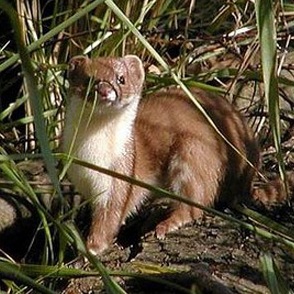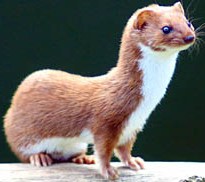Alaska Weasels: Least Weasel
The Mustelidae, or weasel family is a large group of mammals. In Alaska there are eight types of Mustelidae. They include the
wolverine,
fisher,
river otter,
sea otter,
marten,
short tailed weasel,
least weasel, and the
mink.








